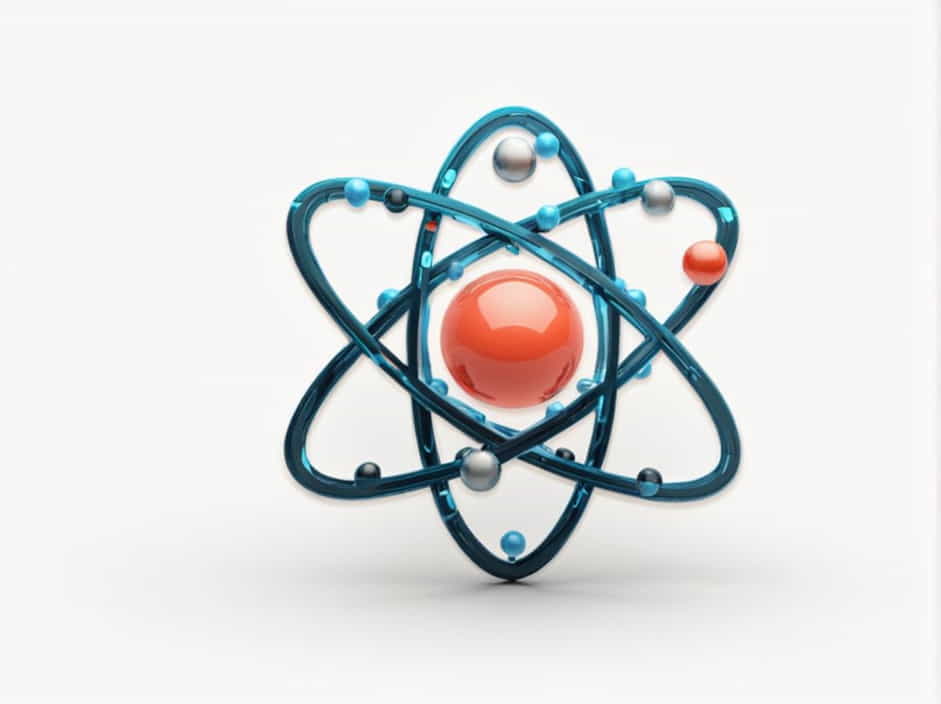The quantum mechanical model of an atom is the most accurate and widely accepted representation of atomic structure. Unlike earlier models, which depicted electrons as orbiting the nucleus like planets around the sun, the quantum model describes electrons as existing in probability clouds or orbitals around the nucleus.
In this topic, we will explore the quantum mechanical model of a boron atom, including its electronic configuration, quantum numbers, orbitals, and energy levels. This information is essential for understanding chemical bonding, atomic interactions, and the behavior of boron in various compounds.
1. Overview of the Boron Atom
1.1 Basic Properties of Boron
- Atomic Number: 5
- Symbol: B
- Atomic Mass: Approximately 10.81 u
- Number of Protons: 5
- Number of Neutrons: Usually 5 or 6 (Boron-10 and Boron-11 are the most common isotopes)
- Number of Electrons: 5
1.2 Importance of Boron
Boron is a metalloid with unique chemical and physical properties. It plays an essential role in materials science, nuclear reactors, semiconductors, and biological systems.
2. The Quantum Mechanical Model of Boron
2.1 Quantum Theory and Atomic Structure
In the quantum mechanical model, electrons are described using wave functions, which determine the probability of finding an electron in a specific region around the nucleus.
Instead of classical orbits, electrons occupy orbitals, which are regions of space where they are most likely to be found. These orbitals are defined by quantum numbers.
2.2 Quantum Numbers of Boron
Each electron in a boron atom is described by a set of four quantum numbers:
- Principal Quantum Number (n) – Determines the energy level of the electron.
- Azimuthal Quantum Number (l) – Defines the shape of the orbital.
- Magnetic Quantum Number (mₗ) – Specifies the orientation of the orbital in space.
- Spin Quantum Number (mₛ) – Represents the spin direction of the electron.
3. Electron Configuration of Boron
3.1 Distribution of Electrons in Energy Levels
The electron configuration of boron follows the Aufbau principle, Hund’s rule, and the Pauli exclusion principle:
This means:
- The first energy level (n = 1) has two electrons in the 1s orbital.
- The second energy level (n = 2) has two electrons in the 2s orbital and one electron in the 2p orbital.
3.2 Orbital Diagram of Boron
The orbital filling can be represented as:
1s ↑↓ 2s ↑↓ 2p ↑ Here, the 1s and 2s orbitals are fully occupied, while the 2p orbital contains a single electron.
4. Understanding Boron’s Orbitals
4.1 The 1s and 2s Orbitals
- The 1s orbital is a spherical orbital closest to the nucleus, containing two electrons.
- The 2s orbital is another spherical orbital but at a higher energy level, also holding two electrons.
4.2 The 2p Orbital
- The 2p orbital is dumbbell-shaped and has three possible orientations: 2pₓ, 2pᵧ, and 2p .
- In boron, only one of the 2p orbitals contains an electron, meaning it is partially filled.
5. Energy Levels and Quantum Transitions
5.1 Energy of Electrons in Boron
Each electron in boron occupies a distinct energy level, with 1s electrons having the lowest energy and 2p electrons having the highest energy in the ground state.
5.2 Excitation and Photon Absorption
When boron absorbs energy (e.g., from heat or light), an electron from the 2p orbital can become excited and move to a higher energy level. This process is crucial in spectroscopy and semiconductor applications.
5.3 Emission Spectra of Boron
When an excited electron returns to a lower energy level, it emits light at specific wavelengths. This emission spectrum is unique to boron and can be used for element identification.
6. Chemical Behavior of Boron Based on Quantum Mechanics
6.1 Valence Electrons and Reactivity
- Boron has three valence electrons (2s² 2p¹), meaning it tends to form three covalent bonds in most compounds.
- It does not easily lose electrons to form a simple ion like other elements in Group 13 (such as aluminum).
6.2 Hybridization of Boron
In molecules like boron trifluoride (BF₃), boron undergoes sp² hybridization, where its one 2s and two 2p orbitals mix to form three equivalent orbitals, creating a trigonal planar structure.
7. Applications of the Quantum Mechanical Model of Boron
7.1 In Material Science
- Boron nitride (BN) is used in lubricants, ceramics, and thermal conductors.
- Boron-based semiconductors are used in microelectronics and quantum computing.
7.2 In Nuclear Applications
- Boron’s high neutron absorption makes boron-10 useful in nuclear reactors and radiation shielding.
7.3 In Medicine and Biology
- Boron neutron capture therapy (BNCT) is an experimental treatment for cancer.
- Boron is essential for plant growth and bone health in humans.
8. Challenges and Future Research
8.1 Computational Challenges
Simulating the quantum behavior of boron in complex molecules requires advanced computational models and quantum chemistry software.
8.2 Quantum Computing Applications
Research is exploring the use of boron-based materials in quantum computing, particularly in quantum dots and superconducting qubits.
8.3 Environmental and Industrial Considerations
Boron’s role in sustainable technologies, such as hydrogen storage and nanomaterials, is an emerging area of study.
The quantum mechanical model of a boron atom provides a detailed understanding of its electronic structure, orbitals, and chemical behavior. With its five electrons distributed in 1s, 2s, and 2p orbitals, boron exhibits unique quantum properties that make it valuable in science, technology, and industry.
From its role in material science and semiconductors to its applications in medicine and nuclear technology, boron continues to be a crucial element. Ongoing research in quantum chemistry and computational physics will further uncover its potential in emerging technologies like quantum computing and advanced materials.
